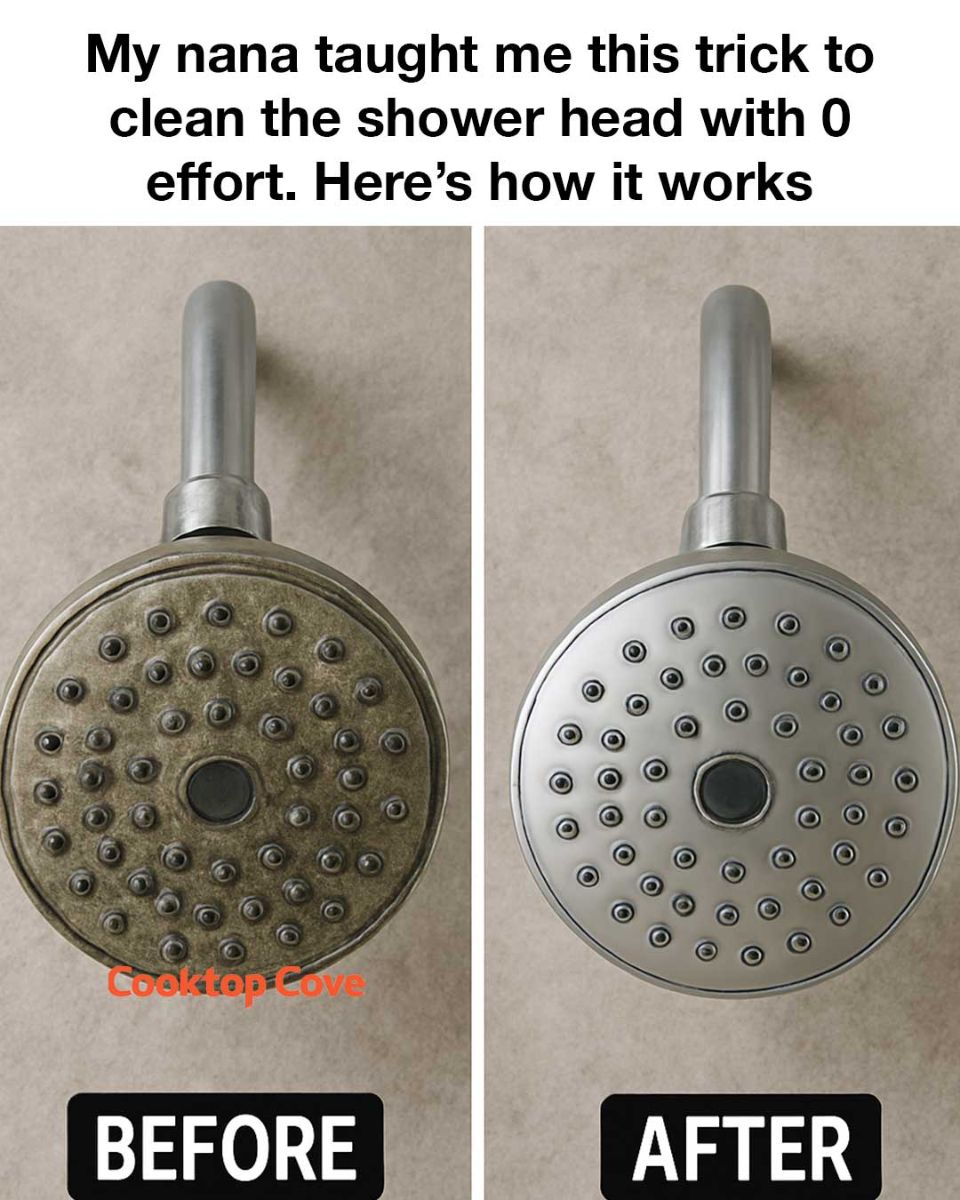5. Step-by-Step Guide to Applying the Trick
1. Fill the plastic bag halfway with white vinegar.
2. Carefully place the bag over the shower head, ensuring that the nozzles are fully submerged in the vinegar.
3. Secure the bag in place using a rubber band or twist tie. Make sure it is tight enough to hold the bag but not so tight that it damages the shower head.
4. Leave the bag in place for at least 30 minutes. For more stubborn buildup, you can leave it overnight.
5. Remove the bag and discard the vinegar. Use a soft cloth to wipe away any remaining residue.
6. Run the shower for a few minutes to flush out any loosened deposits.
6. How This Trick Saves Time and Energy
This method saves time because it requires no scrubbing or manual labor. Once the bag is secured, you can go about your day while the vinegar works its magic. The process is entirely hands-off, allowing you to multitask or relax.
Energy is saved as well, as you don’t need to exert physical effort to achieve a clean shower head. The vinegar does all the heavy lifting, breaking down mineral deposits and grime without any elbow grease.
7. The Science Behind the Cleaning Method
Vinegar is a mild acid, primarily composed of acetic acid, which effectively dissolves calcium carbonate, the main component of limescale. When vinegar comes into contact with mineral deposits, a chemical reaction occurs, breaking down the deposits into soluble compounds that can be easily rinsed away.
This reaction not only cleans the surface but also helps to unclog the nozzles, restoring water flow and pressure. The acidity of vinegar is strong enough to dissolve the deposits but mild enough to avoid damaging the metal or plastic components of the shower head.
8. Common Mistakes to Avoid
One common mistake is not securing the bag properly, which can lead to vinegar spilling and not fully submerging the shower head. Ensure the bag is tightly secured with a rubber band or twist tie.
Another mistake is using vinegar that is too diluted. For best results, use undiluted white vinegar. Additionally, avoid using this method on shower heads with delicate finishes, as prolonged exposure to vinegar can cause discoloration.
9. How Often Should You Clean Your Shower Head?
For optimal performance and hygiene, it is recommended to clean your shower head every three months. This frequency can vary depending on the hardness of your water and the usage of your shower.
In areas with very hard water, more frequent cleaning may be necessary to prevent significant buildup. Regular cleaning not only maintains water pressure but also reduces the risk of bacterial growth.
10. Other Viral Cleaning Hacks to Try
In addition to the vinegar trick, there are several other viral cleaning hacks worth trying. Baking soda and vinegar can be used to clean drains and remove odors. Simply pour half a cup of baking soda followed by half a cup of vinegar down the drain, and let it sit for 15 minutes before rinsing with hot water.
Lemon juice is another natural cleaner that can be used to remove stains and disinfect surfaces. Rubbing a cut lemon on faucets and fixtures can help remove water spots and leave a fresh scent.
11. Final Thoughts on Effortless Cleaning
Cleaning doesn’t have to be a daunting task. With simple, effective methods like the vinegar trick my nana taught me, you can maintain a clean and functional bathroom with minimal effort. This method is not only easy but also environmentally friendly and cost-effective.
By incorporating these effortless cleaning techniques into your routine, you can save time and energy while keeping your home in top condition. Remember, sometimes the simplest solutions are the most effective.

